List of Authors
>>About this blog
Recent blog post
|
[Sam]
Nov. 30, 2015 14:00
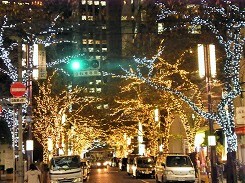 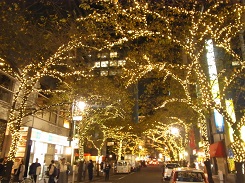
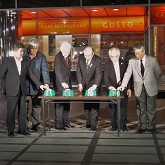 Nihonbashi Sakura-dori St. is bustling with "Sakura Festival" in spring and "TOKYO ILLUMILIA" in winter. Nihonbashi Sakura-dori St. is bustling with "Sakura Festival" in spring and "TOKYO ILLUMILIA" in winter.
On November 27, the annual year-end illumination "TOKYO ILLUMILIA 2015-2016" lights up.
Date: From November 27 to February 14, 2016 16:30 to 23:00
Theme: "Gate of Light" that connects the past, present, and future
The Sakura-dori St., which leads from the Yaesu Exit of Tokyo Station to Nihonbashi, is regarded as the gate, creating a "gate of light" <Yaesu / Nihonbashi> that connects the past, present, and future.
The cherry tree facing the intersection of Sakura-dori St. is decorated with white LEDs to the tip of the branch, so that the branches that have grown greatly overlap and represent the "gate of light".
The cherry trees between the intersections use golden LEDs, and graceful lights are connected to the "gate of light".
A total of about 160,000 LED bulbs are displayed on about 70 300m rows of cherry trees.
From 18:00 on the 27th, at Nihonbashi Plaza Hiroshi Minamiba, the organizers "Nihonbashi Yaesu Nakadori Shopping Association", "Nihonbashi 2-chome Tooricho Association Shopping Association", "Nihonbashi 3-chome Nishimachi Association / Shopping Association", "Yaesu 1-chome Store Association" and "Yaesu 1-chome Central Shopping Association", Mr. Yata Chuo Ward Mayor's.
[Kra-san]
Nov. 30, 2015 12:00
The Doburoku Festival is an event derived from Niiname-no-Matsuri, which appreciates the good harvest of new grains, and was held at Koami Shrine in Nihonbashikoamicho on November 27 (Friday).
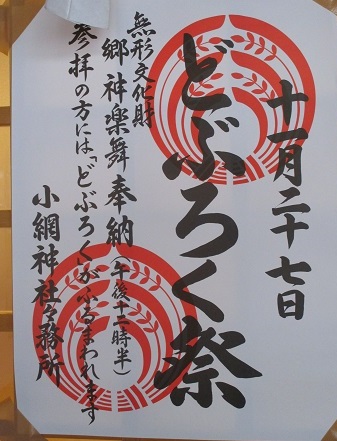 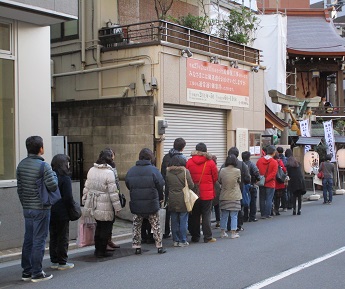 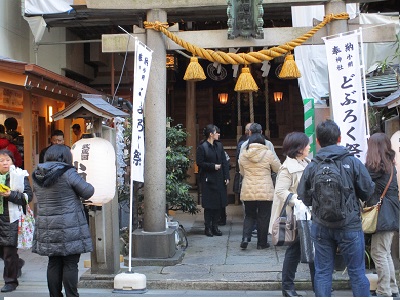
This festival is especially popular as the "Doburoku Festival" because it acts to worshipers in Doburoku (Nigori sake made from fresh rice harvested in the year at Shinryoda), which is offered to Jinmae along with new grains.
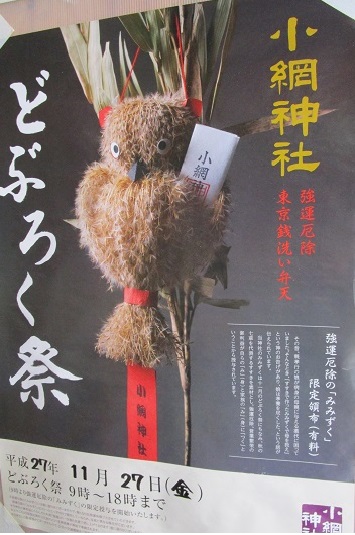 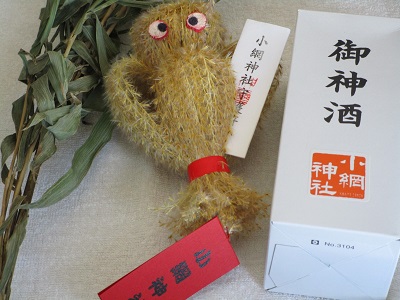
On the day of the festival, a festival was held in shrine hall from 9 o'clock in the morning, and a long line was formed due to the limited distribution of a bottle of sacred wine and the mischief of good luck.
Koami Shrine is enshrined at Koami Manpukuji Temple built in the Muromachi period, and has been worshiped as a god of fortune and prosperity of business, which is said to have originated from Inari Shrine. After the visit, Mr. Miko advised me to doburoku.
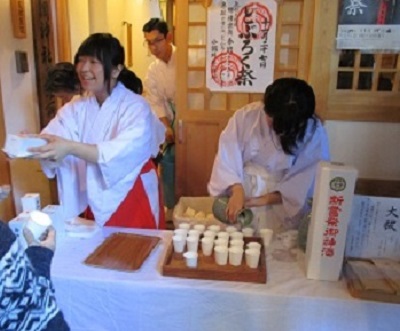
In the past, when the daughter of filial piety was in trouble with the medicine to give to the sick mother, the god told me that `` save the mother with the mizuku made with sosuki ''. It is said that the daughter did filial piety to her mother. "Mimizuku" is based on "Susuki", a representative of the seven herbs in autumn, based on the Doburoku Festival in November, and the benefits of exorcism and thriving business are said to be "Tsuku" to their own "Mi" (body). It seems to have been awarded.
In addition, after noon, "Sato Kagura Dance" from the nationally designated Intangible Cultural Property was dedicated to Kamimae.
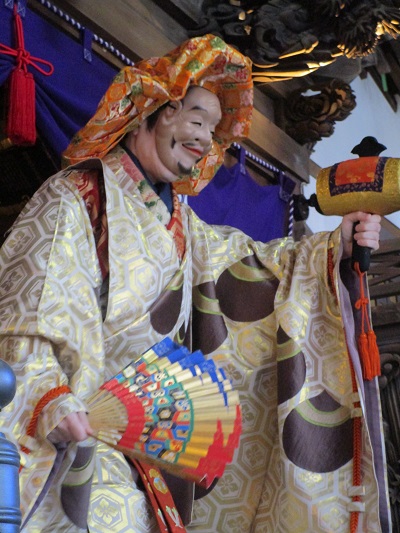
The "Doburoku Festival" next year (2016) of Koami Shrine, one of the two major doburoku festivals in Kanto, will be November 28 (Monday).
[Sam]
Nov. 25, 2015 12:00
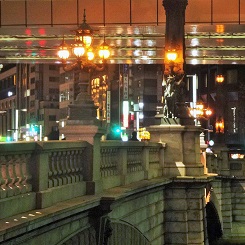 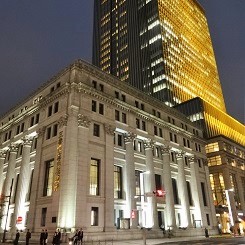
On November 20, "NIHONBASHI ILLUMINATIONS collaboration with FLOWERS" (Nihonbashi Illumination), where you can enjoy early cherry-blossom viewing, will begin for the first time in the Nihonbashi area.
The theme is "Spring".
In various parts of the Nihonbashi area, illuminations with the motif of spring flowers are lit and bloomed gradually. The plan is to gradually roll out in the city, and in the New Year it will be gorgeously in full bloom, and to wrap the winter Nihonbashi in winter with spring light.
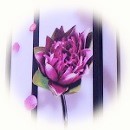 Box-shaped illuminations will appear at the four facilities of Choledo Muromachi 1, Choledo Muromachi 2, Choledo Muromachi 3, and Choledo Nihonbashi from November 20 to February 11 (planned). At the time of lighting, the patterns of flowers waiting for flowering are reflected behind shoji door, and colorful flowers are in full bloom before Christmas. Box-shaped illuminations will appear at the four facilities of Choledo Muromachi 1, Choledo Muromachi 2, Choledo Muromachi 3, and Choledo Nihonbashi from November 20 to February 11 (planned). At the time of lighting, the patterns of flowers waiting for flowering are reflected behind shoji door, and colorful flowers are in full bloom before Christmas.
During the period from December 11 to February 11, the exterior walls of the Mitsui Main Building will be dyed with fantastic illuminations inspired by spring flowers.
The light color of the illumination based on the cherry color is linked to the movement of the wind and the light-up pattern changes, and the illumination gradually increases color and glossiness with the passage of time, and the wall is in full bloom in spring light in the New Year It seems to be
On Muromachi Nakadori, between COREDO Muromachi 1 and COREDO Muromachi 2, "Ohanami Japanese lantern," where 100 Japanese lanterns are dyed in flower patterns during the Christmas season from December 11 to February 11, has an "interactive lighting show".
From January 8 to February 11, 2016, "FLOWERS BY NAKED" is scheduled to be held at Nihonbashi Mitsui Hall.
In the core work, a collaboration work with Ikebana Sogetsu-ryu family former Akane Teshigahara was set up, and a new "flower" that sublimates the "fragile beauty" and "life force" of real flowers with advanced digital art. I hear that this event expresses how to enjoy "flowers".
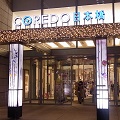 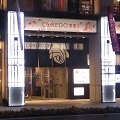 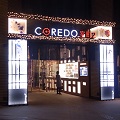 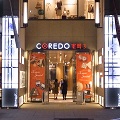
[Shitamachi Tom]
Nov. 25, 2015 09:00
Are you enjoying the colors of the late autumn season? A full-fledged winter will come soon. The town of Tokyo is finally starting to decorate the tail of the year.
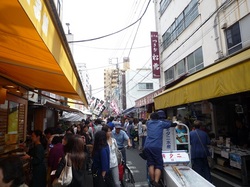 Chuo-ku is also a commercial town, so the end of the year begins here and there. Listening to the BGM of Jingle Bell and the sound of the bell of Fukubiki, I think the year is finally over. Chuo-ku is also a commercial town, so the end of the year begins here and there. Listening to the BGM of Jingle Bell and the sound of the bell of Fukubiki, I think the year is finally over.
Tsukiji was a place where foreign settlements were placed after the Meiji Restoration, and according to one theory, Tsukiji was the first Christmas party in Japan.
I guess you have been active in incorporating new things for a long time. Even now, this town seems to be full of free and advanced spirits that are not bound by old evil.
By the way, Tsukiji Market will be relocated in November next year. We started to carve out the countdown of the remaining one year. The out-of-office market remains, but this year was the last time we spent the New Year with the Central Wholesale Market. In December, the number of shoppers increases day by day, and people who regret more remnants than usual may be pushed.
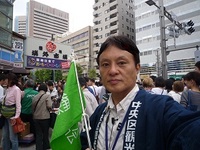
I sometimes serve as a tourist guide for Tsukiji with the help of the Chuo-ku Tourism Association, but from now on, it may be a little sentimental every time I talk about relocation.
Fortunately, the construction of a pre-maintenance facility in Chuo-ku is also progressing, and you will soon be able to see the new Tsukiji. I am sure that the future of the new generation Tsukiji Market is also attractive.
Please remember the bustle of the Tsukiji Market neighborhood, which has reached the end of the last year, in your memory.
[Slow of Satsuki's Koi]
Nov. 24, 2015 09:00
Suitengu Shrine is familiar with praying for safe delivery. Since March 2013, it has been relocated near Meijiza Hamacho for rebuilding work.
・

・
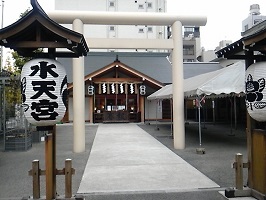
・November, 2015
This under construction now, a part of the scaffold was removed and a beautiful appearance was seen.
I took this photo in October, but I think the scaffold was removed in September. It looks like this as of November.
The completion of the new shrine hall will be in the spring of 2016.
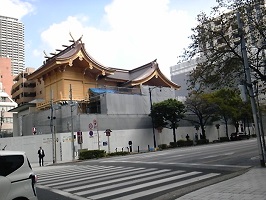
From Suitengu (November 20, 2015), you will find Koami Shrine when you pass amazake Yokocho toward Nihonbashi River.
One of the "Nihonbashi Seven Lucky Gods" is the benefit of repelling bad luck and increasing luck. This is also under restoration work.
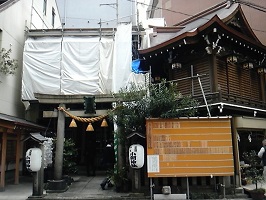
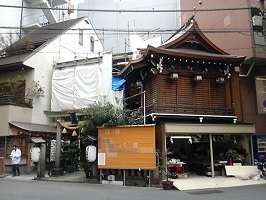
During the construction period, you can worship as usual, and when you took a picture, some people came to visit.
It is scheduled to be completed in November, so it may be completed when this blog is uploaded.
[Sam]
Nov. 21, 2015 09:00
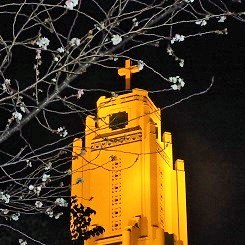 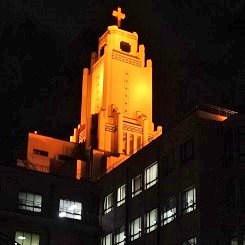
 "St. Luke's International University (formerly St. Luke's International Hospital) St. Luke's Chapel" was established in 1902 as a chapel of St. Luke's Hospital, founded in 1902 by Toysler, a missionary doctor of the U.S. "St. Luke's International University (formerly St. Luke's International Hospital) St. Luke's Chapel" was established in 1902 as a chapel of St. Luke's Hospital, founded in 1902 by Toysler, a missionary doctor of the U.S.
The current chapel is a Neo Gothic style built in 1936 after the Great Kanto Earthquake of 1923 and a fire two years later. (Decorating is an art deco style)
At that time, you can see the cross on the roof of the hospital from any hospital room, and it is said that it was a mental support for the patient.
Currently, there are two "places of prayer": "Chapel (chapel)" on the 2nd floor of the old building of the hospital and "Toysler Memorial Hall (completed in 1992 <Korea Hall>) on the 2nd floor of the new building.
As a place to find the ability to respond to various problems, including illness, while calming and praying, we continue to play a role as a place for revelation of the mental pillars of medical care and education held at St. Luke International Hospital / International University.
The two "places of prayer" are connected by the corridor.
In the recent redevelopment project for the entire hospital premises (St. Luke Life Science Center Initiative), the central part including the chapel of the old hospital building has been preserved and restored.
("Chapel and attached old ward" is selected by Tokyo Metropolitan Historic buildings)
From the tower of the old building, the melody of the choir flows every day at 8:30, 12:00 and 18:00.
In the evening, the spiral with a cross is lit up in orange, and clearly emerges in the night sky.
"October cherry blossoms" are planted in the courtyard.
It is said to be the subspecies of Kohigan, a hybrid of Edhigan and Mamezakura, and blooms intermittently small double-flowered flowers from October to early spring.
The flower color is white to pale pink, with 3 to 5 flowers blooming sparsely.
There is no gorgeousness, but with the illuminated chapel in the background, it creates a dignified atmosphere unique to this season.
There is a refreshing and harsh air.
|
Links
|


 Nihonbashi Sakura-dori St. is bustling with "Sakura Festival" in spring and "TOKYO ILLUMILIA" in winter.
Nihonbashi Sakura-dori St. is bustling with "Sakura Festival" in spring and "TOKYO ILLUMILIA" in winter.








 Box-shaped illuminations will appear at the four facilities of Choledo Muromachi 1, Choledo Muromachi 2, Choledo Muromachi 3, and Choledo Nihonbashi from November 20 to February 11 (planned). At the time of lighting, the patterns of flowers waiting for flowering are reflected behind shoji door, and colorful flowers are in full bloom before Christmas.
Box-shaped illuminations will appear at the four facilities of Choledo Muromachi 1, Choledo Muromachi 2, Choledo Muromachi 3, and Choledo Nihonbashi from November 20 to February 11 (planned). At the time of lighting, the patterns of flowers waiting for flowering are reflected behind shoji door, and colorful flowers are in full bloom before Christmas.







 "St. Luke's International University (formerly St. Luke's International Hospital) St. Luke's Chapel" was established in 1902 as a chapel of St. Luke's Hospital, founded in 1902 by Toysler, a missionary doctor of the U.S.
"St. Luke's International University (formerly St. Luke's International Hospital) St. Luke's Chapel" was established in 1902 as a chapel of St. Luke's Hospital, founded in 1902 by Toysler, a missionary doctor of the U.S.
